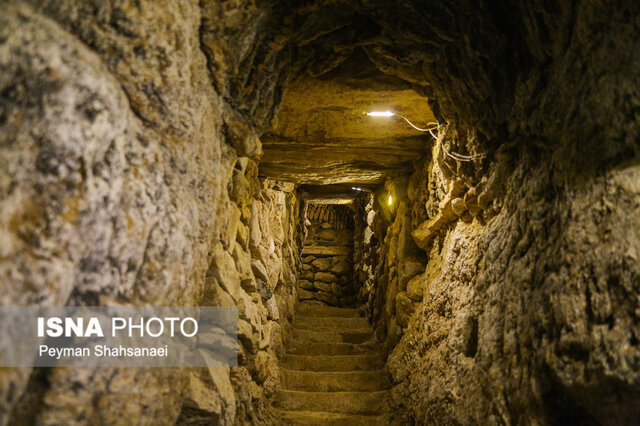Ancient underground city prepared for sightseers

TEHRAN—The centuries-old underground city of Kord-e Olia in Tiran county, central Isfahan province, is ready for public visits, a local tourism official has said.
The underground city is now open to tourists through 13 reopened entrances, Mohsen Mazaheri explained on Sunday, ISNA reported.
Even though there is no special engineering system used in Kord-e Olia, it is one of Iran’s most attractive and amazing underground cities, the official added.
Located under the village of Kord-e Olia, the underground city has an area of over 20,000 square meters, 80 wells, and many tunnels, he noted.
Originally shaped before the Islamic era, it was considered a safe shelter in hard times and during cold winters and periods of insecurity, he mentioned.
Some archeological surveys carried out on this troglodyte show that it dates back to the Parthian era. However, some experts believe that it dates back to the Achaemenid period, he stated.
Possibly built for military and security reasons, the underground city of Kord-e Olia had nested corridors, 80 wells, and 80 entrances, as well as many rooms and halls and three floors.
The underground city’s entrances and exits are separated by one meter and its doors open at sunrise.
The city occupies a prominent position among Isfahan’s tourist attractions.
Iran is a haven for ancient troglodytic architecture which is somewhat forgotten, though they are filled with life and creativity. The northwest Kandovan village is one of the most famous examples of troglodytic architecture in the country; its ice-cream cone-shaped homes resemble that of Turkey’s Cappadocia.
In October 2018, the country hosted the 3rd International Troglodytic Architecture Conference in which tens of experts, researchers, and academia discussed troglodyte-associated architecture, culture, and technology.
Soaked in a rich history, Isfahan was once been a crossroads of international trade and diplomacy in Iran and now it is one of Iran’s top tourist destinations for good reasons.
It is filled with many architectural wonders, such as unmatched Islamic buildings, bazaars, museums, Persian gardens, and tree-lined boulevards. It’s a city for walking, getting lost in its amazing bazaars, dozing in beautiful gardens, and meeting people.
The ancient city is renowned not only for the abundance of great historical bridges but also for its ‘life-giving river’, the Zayandeh-Rood, which has long bestowed the city an original beauty and fertility.
Isfahan has long been nicknamed as Nesf-e-Jahan, which is translated into “half the world”; meaning seeing it is relevant to see half the world. In its heyday, it was also one of the largest cities in the region with a population of nearly one million.
The cool blue tiles of Isfahan’s Islamic buildings, and the city’s majestic bridges, contrast perfectly with the encircling hot, dry Iranian countryside.
The huge Imam Square, best known as Naghsh-e Jahan Sq. (literary meaning “Image of the World”), is one of the largest in the world (500m by 160m), and a majestic example of town planning. Constructed in the early 17th century, the UNESCO-registered square is punctuated with the most interesting sights in Isfahan.
Modern Isfahan is home to some heavy industry, including steel factories and a nuclear facility on its outskirts. However, its inner core wants to be preserved as a priceless gem.
The city is also home to a gigantic, professional, and state-of-the-art healthcare city, which is a major destination in the realm of medical tourism.
ABU/AM
Leave a Comment